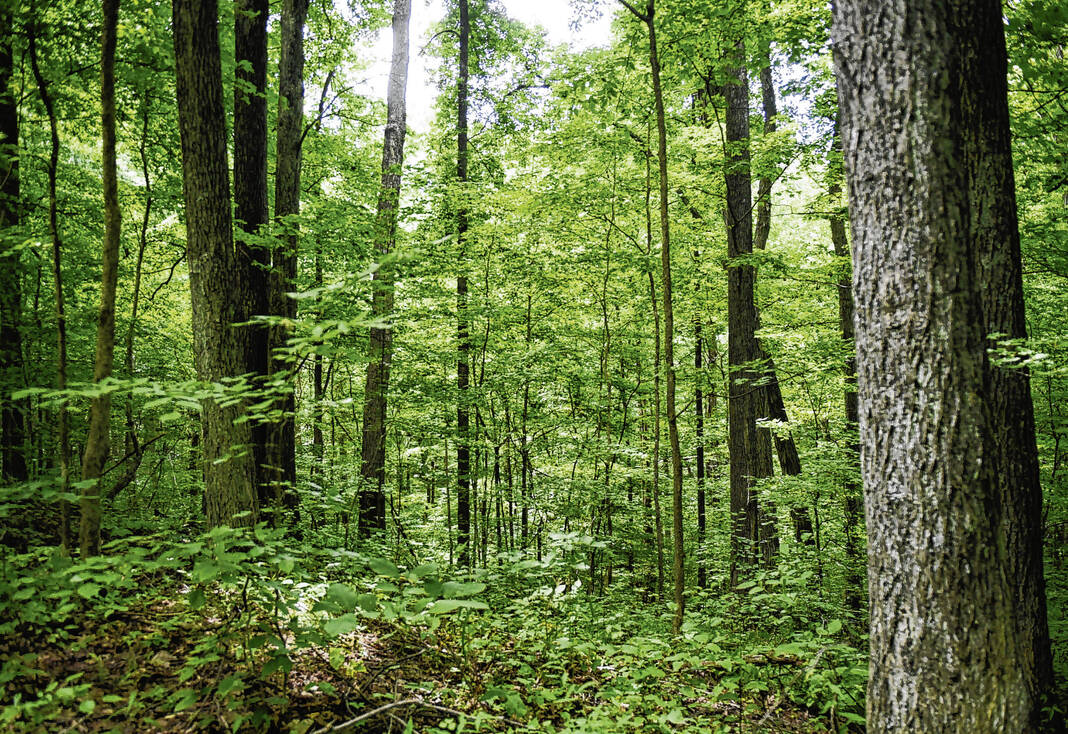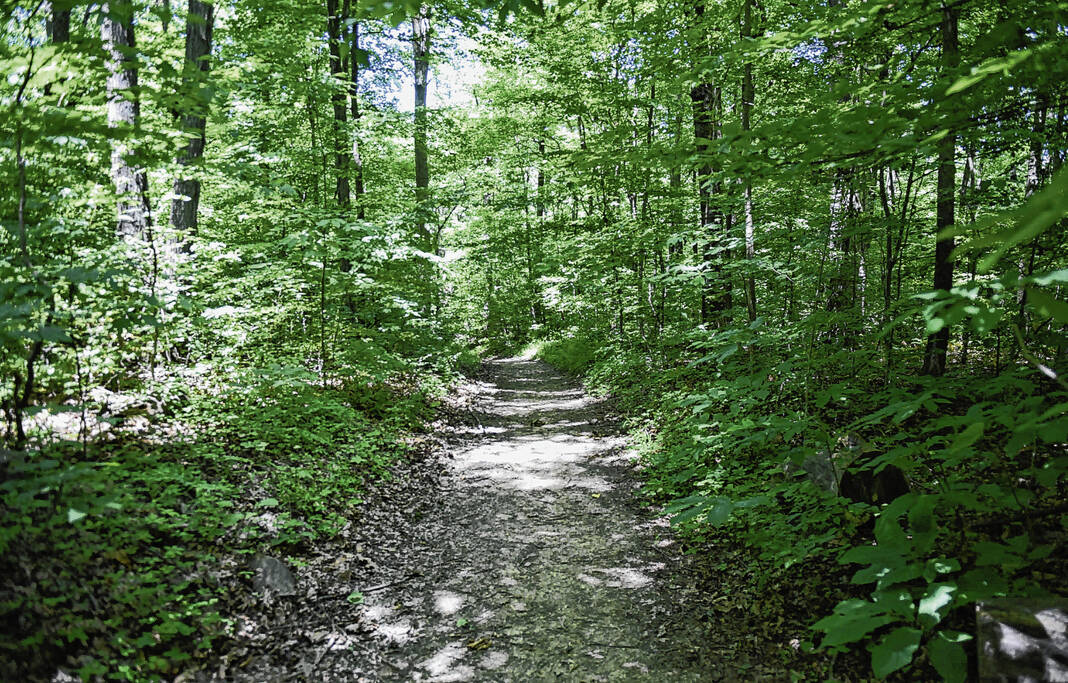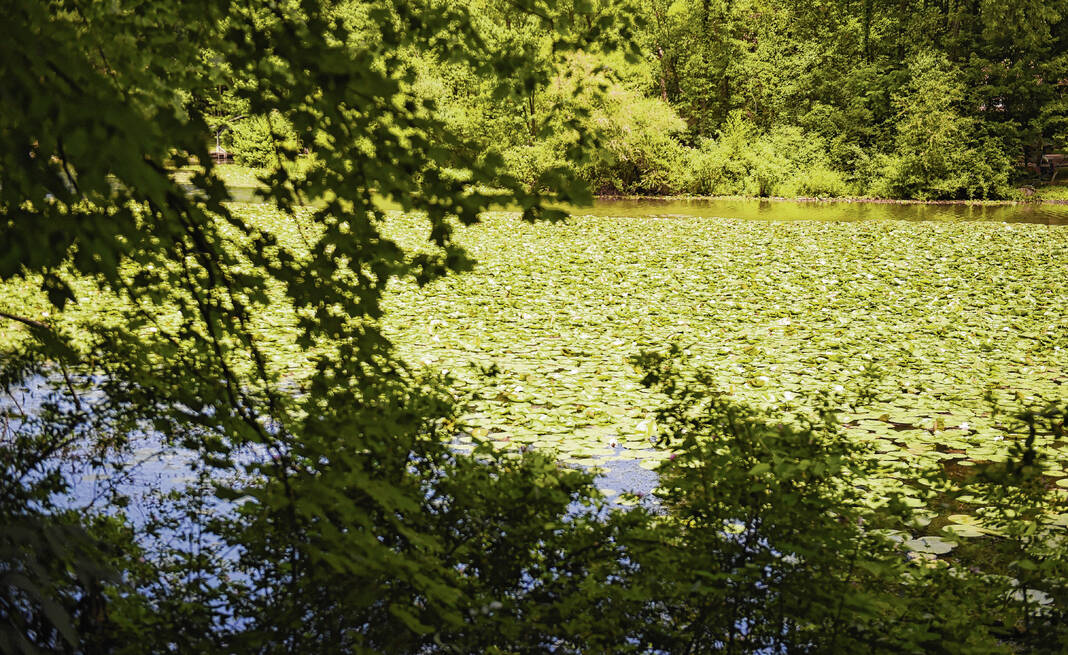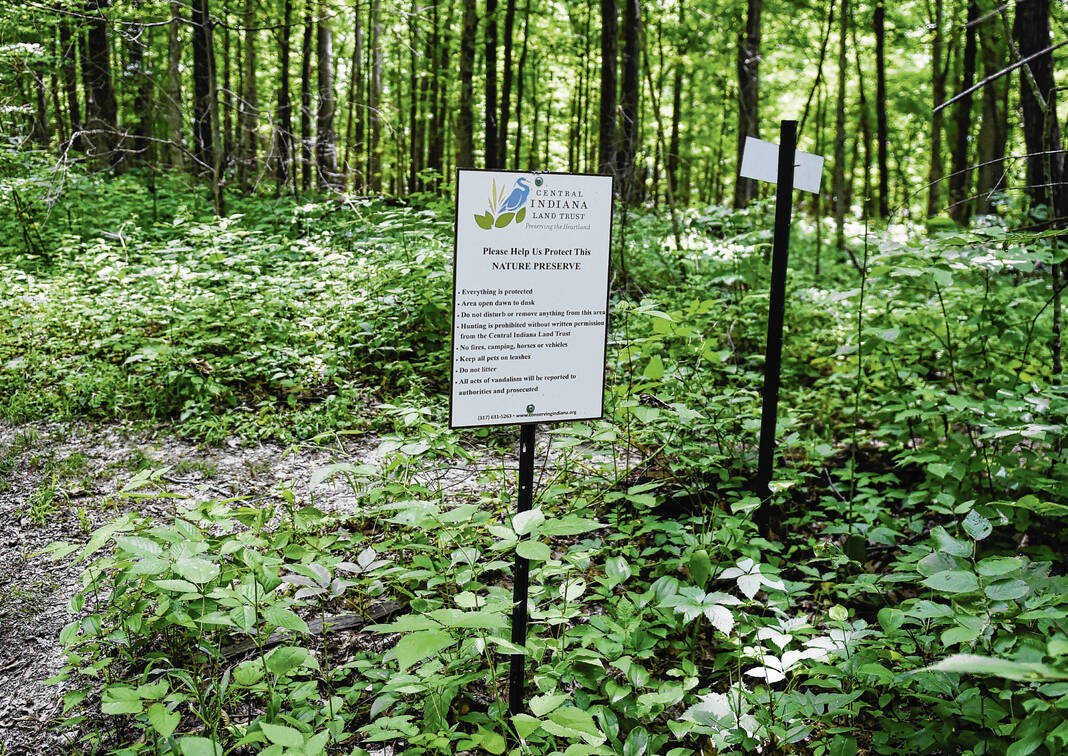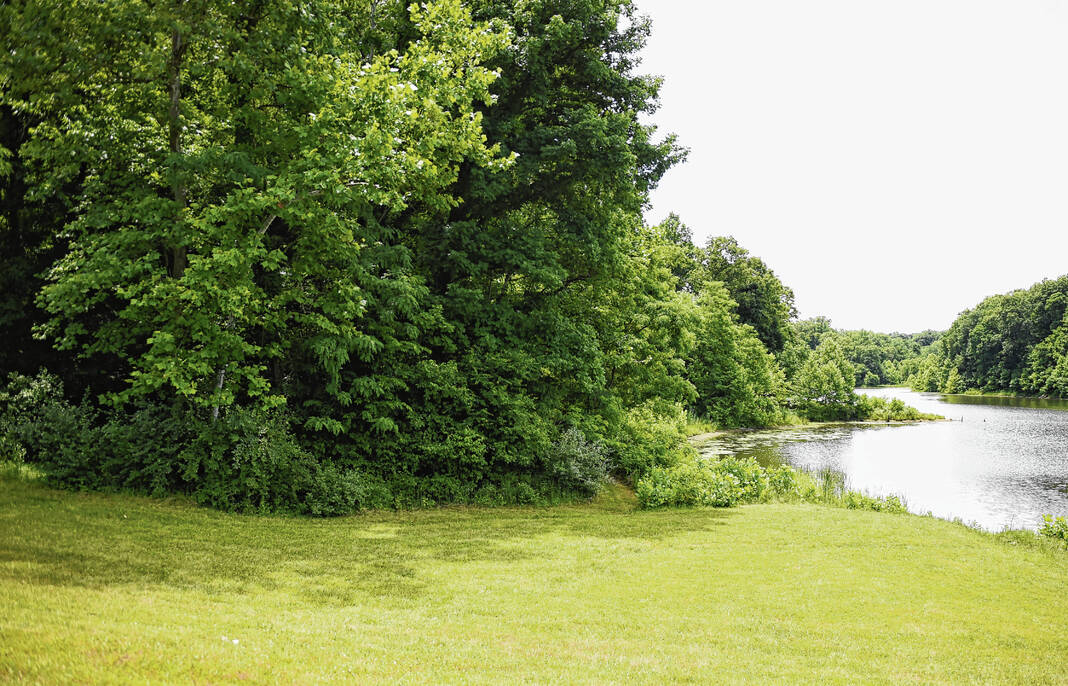Walking down the narrow path beneath the towering elm, maple and oak trees, the silence of nature is enveloping.
Other than the call of a far-off bird, the rustling of leaves in the breeze and the occasional unseen animal scurrying through the underbrush, all is quiet. Here, in the Hills of Gold conservation area, people can escape into one of the Indiana’s most ecologically diverse areas.
Astute and lucky nature-spotters might catch rare species such as long-eared bats, red-shouldered hawk, worm-eating warbler or an Eastern box turtle — all which make their home in the area.
“It’s a really special area,” said Cliff Chapman, executive director of the Central Indiana Land Trust. “It looks a lot like Brown County, but the soils are so much richer, and that supports more plant life, it supports more bug life, and that’s how we’re finding more rare birds and rare raptors and rare spiders and lots of turtles. Everything just works so well there, and we want to continue to protect more land.”
In the southwestern corner of Johnson County, an ecological treasure trove has been set aside. The Central Indiana Land Conservancy announced the addition of 109 acres of protected land to the area known as the Hills of Gold — a diverse forest landscape home to a number of rare or threatened birds, reptiles, plants and insects.
Known as Callon Hollow, the new preserve means that more than 1,500 acres of untouched land has been set aside to ensure that wildlife endures.
“By adding to the Hills of Gold area, we are protecting crucial habitat for so many rare and endangered species. Indiana doesn’t have a lot of big blocks of forest remaining so adding this preserve within a larger conservation area does a lot to help plants and animals to thrive,” Chapman said.
The Hills of Gold is an area located around Lamb Lake south of Trafalgar. During the last ice age, glaciers stopped in this area, depositing a mixture of soils and sculpting the unique landscape into an ideal habitat for a wide variety of plants and animals.
Glaciers also left behind something else — small flakes of gold that have been found in streams and waterways in the area over the years, and still are present in small quantities. Hence, the moniker Hills of Gold.
In 2015, the Indiana Academy of Science conducted a biodiversity survey in the conservation area. More than 60 scientists, naturalists, students and other volunteers combed the region searching out different species. They reported 548 different species.
“This two-day survey provided an initial ‘snapshot in time’ and has revealed the remarkable species richness of this area,” according to the report.
The area is one of the main focal points of the Central Indiana Land Trust, an organization that preserves significant natural spots around the region. Since 1990, the group has protected more than 6,500 acres.
Through donations and land purchases, the Central Indiana Land Trust now has three properties in the Hills of God. The Laura Hare Preserve at Blossom Hollow is a publicly accessible 149-acre property wrapping around Lamb Lake in southern Johnson County.
The area’s hilly, unbroken block of hardwood forest is a key habitat for migratory birds and forest interior nesting birds.
A second property, Betley Woods at Glacier’s End, is an adjacent piece of land closed to the public. Located just north of the Brown County border, it sits where a line of glaciers stopped moving southward thousands of years ago. The resulting mix of both glaciated and unglaciated land provides a rich habitat for incredibly diverse flora and fauna.
The Central Indiana Land Trust recently requested a botanical inventory from state officials. On the 300 acres of Betley Woods, the inventory found 484 plant species.
The landscape includes steep bluffs, exposed bedrock, shale-bottom streams and chunks of granite strewn across the valley floors.
The newest addition is Callon Hollow, the furthest property to the west in the Hills of Gold. The hollow is home to a wide range of plants and animals that are facing habitat loss, including worm-eating warblers, broad-winged hawks and spotted wintergreen, a plant species on the state watch list.
“Our goal there is to have a forest interior habitat, which is a place without fields and proximity to fields or roads or open land,” Chapman said. “There are a lot of species that need a big block of forest to thrive or even to survive.”
Callon Hollow was purchased from two separate landowners, the result of more than seven years of discussions and work to come together. Because it was undeveloped forested land within the Hills of Gold, it seemed like an ideal fit for the land trust, Chapman said.
The purchase of the land was made possible by a group of donors including the Sam Shine Foundation, the Anonymous Fund of the Indianapolis Foundation and contributors to Central Indiana Land Trust’s Evergreen Fund for Nature. Another source of funding for the purchase came from American Electric Power, Indiana Michigan Power’s parent company, under a legal settlement with the U.S. Environmental Protection Agency, eight states, and 13 citizen groups.
Currently, Callon Hollow is strictly set aside as a nature sanctuary; there is no public access planned at this time, Chapman said.
“Access is through private roads, and part of our agreement to get access to those roads is that we’re not able to do a public trailhead,” he said. “If we are ever able to connect it with our Blossom Hollow preserve to the east, it could be opened to the public via trail. And that would be wonderful at some point, but there’s no immediate plans for that.”


